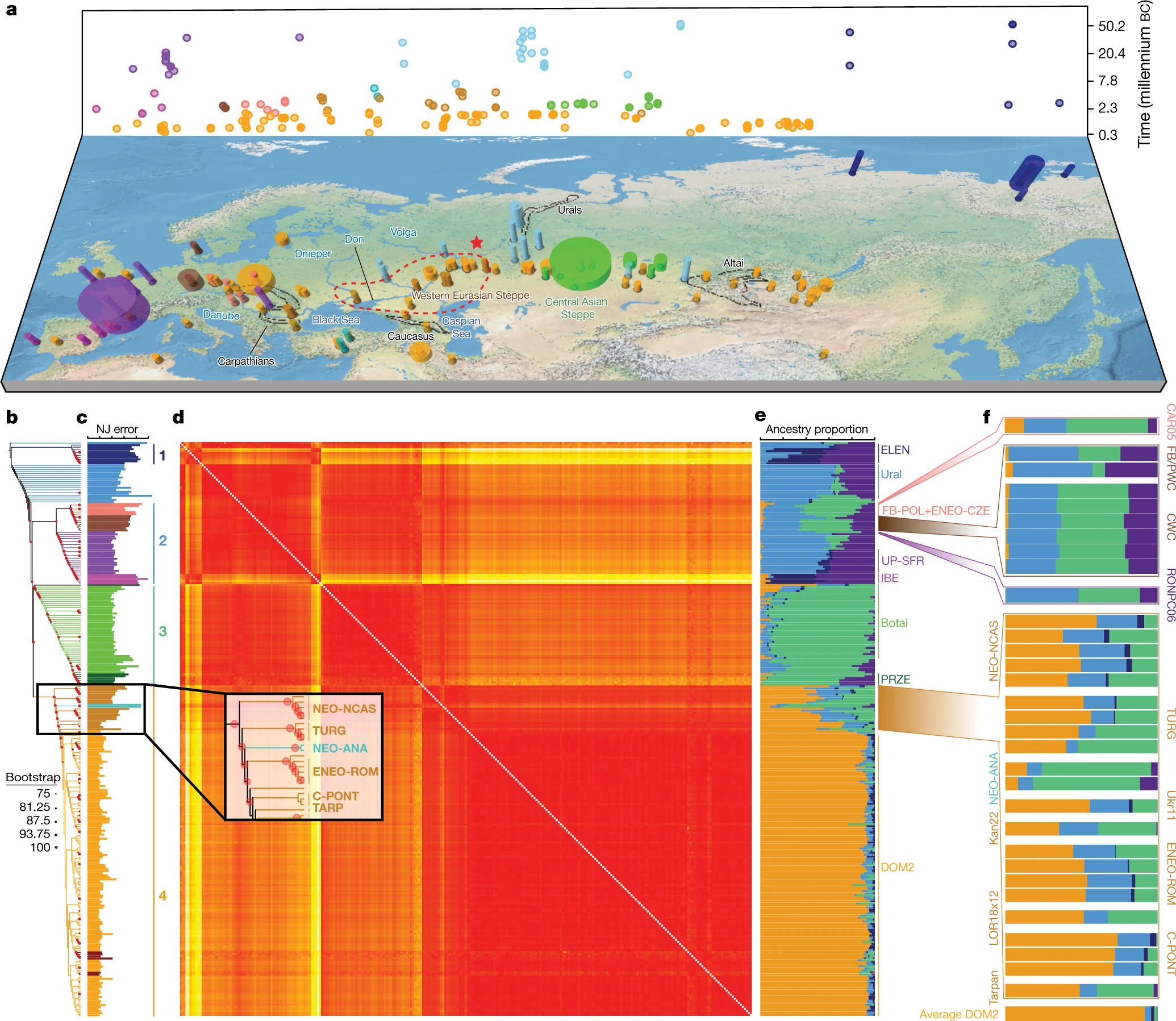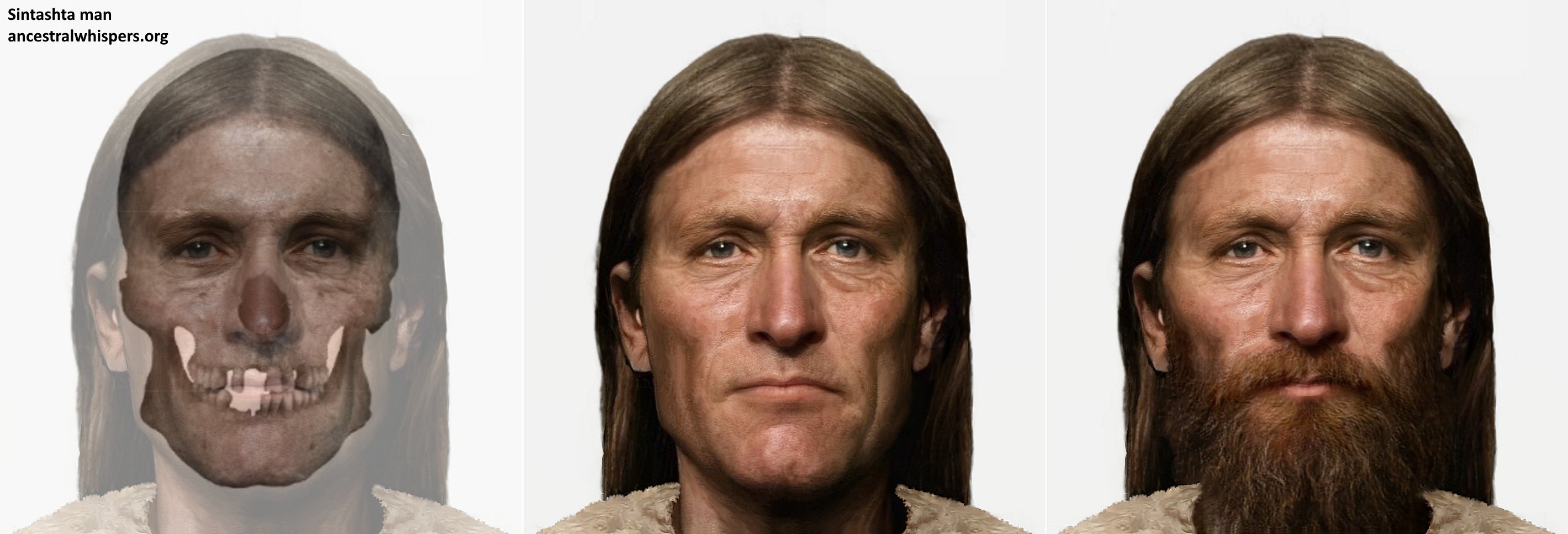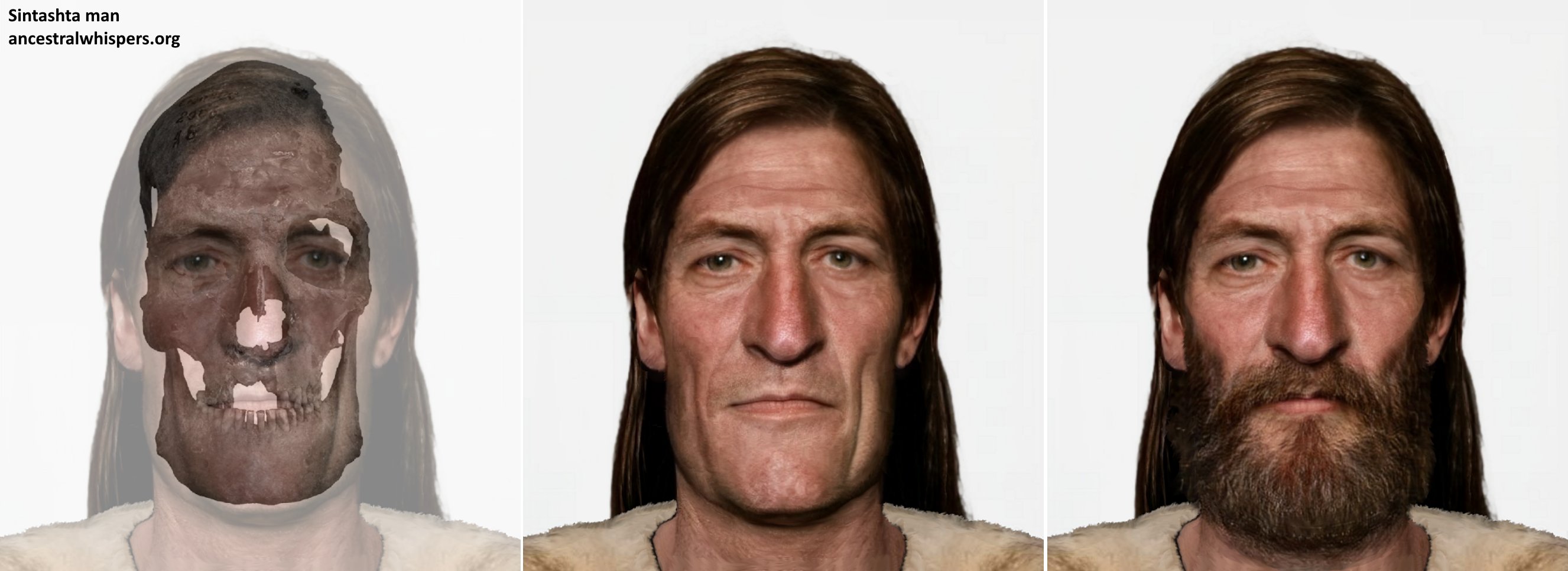I've been waiting for some concrete DNA evidence about where modern horses came from since I interviewed Alan Outram three years ago and he hinted that it was soon to be published. He indicated that Sintashta horses might end up being more important than Yamnaya ones, and now that the new paper, to which he contributed, has finally been published, I can see why.
Botai may have been first to corral horses for milking but they didn't ride them.
Yamnaya kept horses for milking too but we cannot see if they were ridden (However Trautmann et al 2023 shows Yamnaya did ride them)
Wilkin et al (2021) looking at milk proteins in pottery agrees with this new paper regarding "a potential epicentre for horse domestication in the Pontic–Caspian steppe by the third millennium BC" = Yamnaya.
Librado et al (2021) points to Volga-Don region (aka Yamnaya EUROPE) as the homeland of modern domestic horses
Sintashta horses (DOM2) were superior for riding (stronger backs) and replaced earlier ones from 2200 BC
Sintashta horses (DOM2) had genetic continuity with earlier Yamnaya /Repin ones (TURG) and Steppe Maykop (Aygurskii), and Poltavka (Sosnovka) - specifically two late Yamnaya specimens from approximately 2900 to 2600 BC
Yamnaya horses had some relation, but not much, to Botai horses
The Tarpan and modern Przewalski’s horses do not descend from the same ancestral population as modern domestic horses
Modern horses were domesticated in Europe but the paper calls it West Eurasia - possibly as a deliberate, politically motivated obfuscation
The ancestors of Sintashta horses came from the steppe East of the Dnieper and West of the Volga-Don region - ie: firmly within European Yamnaya territory during the late fourth and early third millennia BC
Corded Ware horses were not the same as Yamnaya/Sintashta horses
Earlier LBK and other Neolithic horses in Denmark, Poland, Czechia and Hungary had some affinity with Yamnaya/Sintashta horses - the geneflow seems to have been via Thrace
Corded Ware expansion into Europe was not accompanied by horses but rather they adopted local horses as they migrated (not clear if they were ridden)
Replacement of other horse lineages in Europe and Asia by Sintashta ones was accompanied by spread of both equestrianism and (a bit later) light two wheeled war chariots
The spread of Sintashta horses into the middle east was likely accompanied by the spread of a specialised class of Sintashta descended horse trainers like the Mitanni.







/https://tf-cmsv2-smithsonianmag-media.s3.amazonaws.com/filer/51/9f/519fea8a-a215-48fe-ba09-fae09a0bb3e3/kennewick-hero.jpg)







